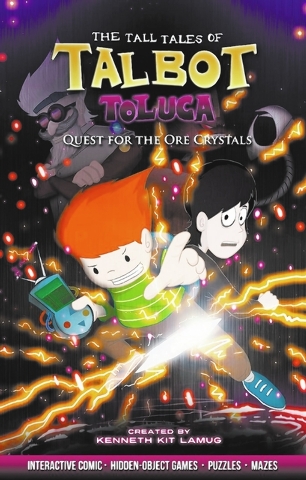Literary Las Vegas: Kenneth Kit Lamug

Take one part “Where’s Waldo,” mix in liberal doses of “Dr. Who” and “Hitchhiker’s Guide to the Galaxy,” sprinkle in comic book-style illustrations and you have “The Tall Tales of Talbot Toluca: Quest for the Ore Crystals.” Published with the help of crowdfunding and written and illustrated by Las Vegas resident Kenneth Kit Lamug, the book features Norbrooke Academy students on a mission to retrieve their dematerialized professor and stop the evil Dr. Kadoom. Along the way readers must search for hidden objects, solve puzzles and maneuver mazes. The book concludes with tips for artists who might want to create hidden object adventures of their own. For more information, visit rabbleboy.com. Lamug is one of 60 authors slated to participate in the Local Author Showcase from 9:30 to 11:30 a.m. March 28 at the Paseo Verde Library, 280 S. Green Valley Parkway. For more information, visit mypubliclibrary.org.
Excerpt:
When I was in high school, I used to draw hidden-object scenes for fun. I drew them on a regular sheet of paper in black and white. These days, it’s so much easier with computers and drawing tablets. There’s less frustration from mistakes and no more ink smudges on my work. Here are some steps from my workflow whenever I create a hidden-object puzzle.
Step 1: Create the framework for the world. Draw the environment, buildings and other structures. Since this is where your characters will live, the more detailed you are, the easier it will be in the later stages. If you are working on the computer, it also helps to block in the structures by coloring them in. This will act as a guide and give some depth to your illustration.
Step 2: Add characters and other elements. Using the environment as a guide, start sketching your characters and other objects. I usually don’t add too much detail to the characters unless there’s something specific I want to achieve. Most of the time I will add the details in the inking process.